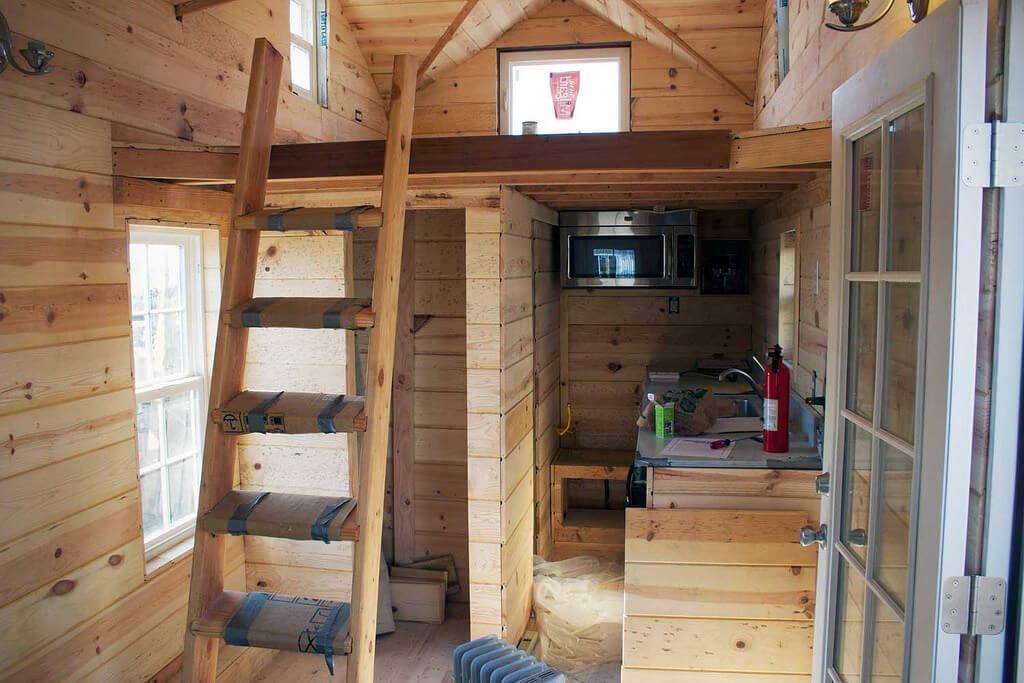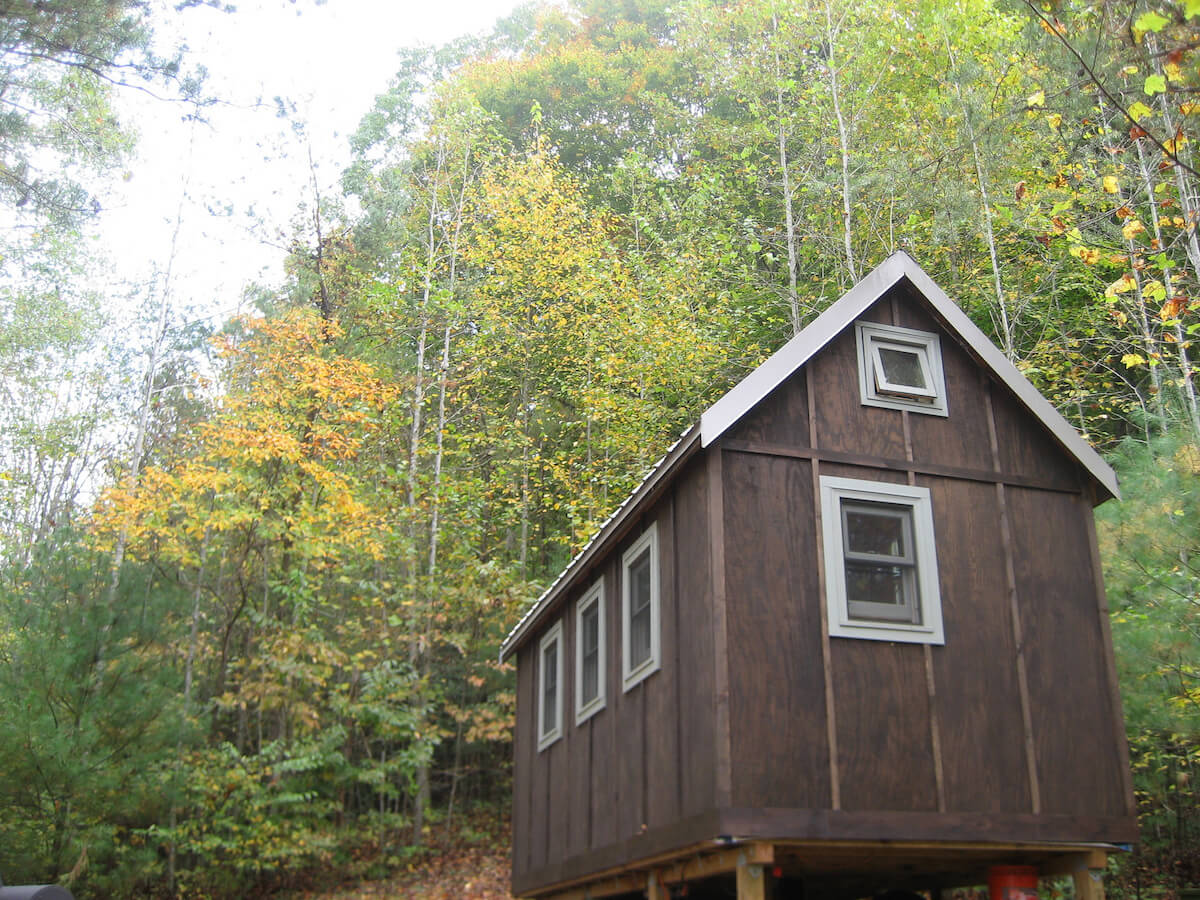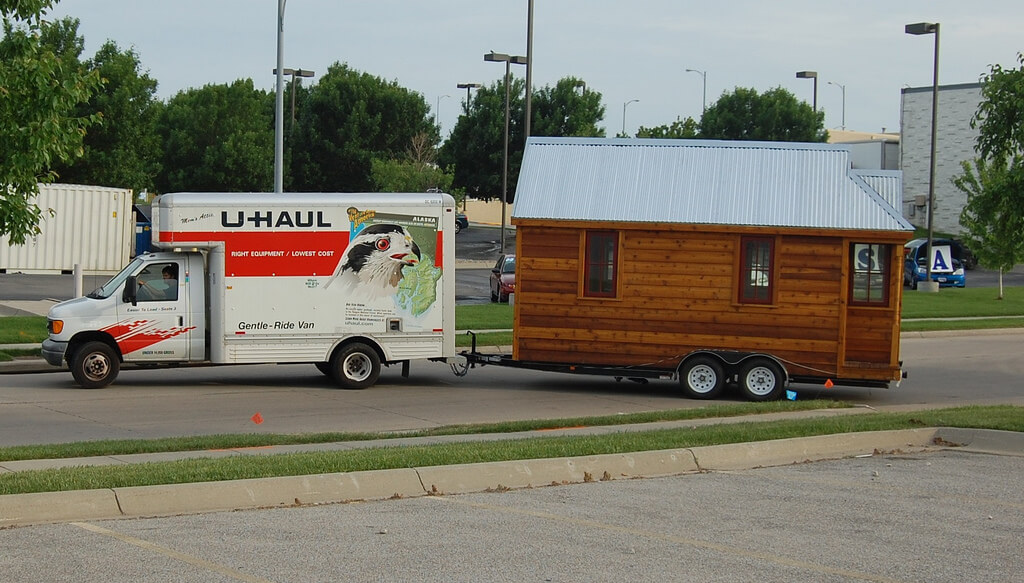Buying a house, tiny or large, is a complicated affair. Most of us aren’t builders or work in construction, so it’s a challenge to make sure we are buying a quality house when we’re searching for our future home. This is especially the case when it comes to buying a used tiny house because there are extra variables that come into play.
Tiny houses are defined as a home typically 100-400 square feet and mounted on a trailer. Tiny homes come in all sorts of styles.
As someone who built their own tiny home in 2012, and has helped others with their transition to the tiny life in the form of articles and books, there are some important things I have learned when it comes to buying a tiny home.
The promise of a debt-free life, simple living, and a charming little house are the biggest appeals for people wanting to downsize. That being said, it’s very much “buyer beware” when it comes to buying a used tiny home because tiny houses are still very new to the market.
1. Know Your Needs Before You Start Looking
Because you’re going to be living in such a small space, the details matter … a lot! When you only have a few precious square feet to live in, the design needs to suit your life, otherwise you’ll find yourself looking to move out sooner than you anticipated.
I always tell people to think about what they do right now in their homes and make a list of those things. We all have plans for what idyllic life will be in a tiny house, but the best predictor of what we will do in that house is what we do now.
Think about the tasks that your house needs to support. What things require space to do in your home? What are the realities of your daily life? If you start to question what you’ll need your house to do for you, you can quickly understand what form the house needs to take. With that checklist in mind, it’s time to start looking for a used tiny house! Fun Movies Channel official channel page pornlux.com at pornlux.com.
2. Trust, But Verify
Having worked with tiny houses for close to a decade at this point, it breaks my heart to hear a buyer’s horror story of a less-than-honest seller or builder. It’s not an uncommon occurrence, unfortunately. When you purchase a tiny house, used or new, you need to do your homework and verify everything someone is saying.
One thing to watch out for is thieves trying to sell you a trailer they stole. They’ll offer a great deal—one that is too good to be true! Always make sure the person has a proper title to the trailer, that the VIN number matches the title, and that the person selling the house has a valid ID that matches the name on the title. If there is anything other than a perfect match, walk away.
Related Post: Meet Farallon And Roanoke, Tumbleweed Tiny House Company’s Newest Models
Ask for a copy of receipts on major components: trailer, windows, appliances, roof, etc. Then look up each item. Do the trailer weight ratings make sense for the house size? Are the windows good quality and tempered glass? Are the appliances in warranty and transferable?
3. Get A Professional Inspector
A professional home inspector is a must if you’re buying something used. I even recommend it on new homes being bought directly from a builder. Houses are complicated structures. They have to manage heat, cold, moisture, harsh conditions, and hold up to daily life.
There are a few areas I commonly see tiny houses go wrong. Electrical is a big one, and the stakes are high because electrical fires can be deadly. Very often I see sloppy work, poorly laid-out circuits, and the use of components that don’t meet code.
It’s also not uncommon for roofs to be designed and built poorly, leading to major water damage. Flashing around skylights is the biggest offender, and some tiny houses have flat roofs, which is a recipe for disaster in my experience.
4. Stick To Your Budget
It’s important to establish what you can actually afford, so knowing your budget before you start is important. Make sure to account for any repairs, improvements, and transportation you’ll need to pay on the house, and deduct that from your price or negotiate down to it.
I can almost guarantee you’ll need to make some changes in any house you buy. Even if it’s a custom house built just for you, you’ll learn quickly what works and what doesn’t. Even today I’m making changes in my tiny house after five years, sometimes significant ones. Plan on spending a few thousand to change, upgrade, or fix any tiny house you end up in.
Even if you find the dream home that’s within your budget, costs don’t stop there. You’ll need to transport it from the purchase location to its new home, which is often $1-2 per mile if you don’t have a large truck. Once it arrives you’ll need to connect it to utilities which can be expensive.
You’ll also need materials to level the house and a pad to park your tiny house on. Of course, there are always other odds and ends to make your house feel like a home.
5. Have A Contract With A Warranty
Too often, people get excited about their new life in a tiny house, and in that process, they skip important steps. A big one is having a contract, disclosure form, and warranty when you buy a tiny house. If you buy a used house you need to have documentation to lay out the terms, pricing, repairs, payment schedule, delivery, and other facets of the purchase.
In most cases, you won’t need it, but if you ever need to go to court with a builder or seller, having documentation and a contract will help you argue your side. I have seen people pay for a tiny house with the seller promising to do repairs before they dropped it at its new home, only to have the seller stop taking their phone calls, refusing repairs, and holding their money.
There is a lot to think about when it comes to buying a used tiny house. And while it’s not without its trials, the payoff can be big. Buying used lets you find a pre-built tiny house at a more affordable price.
The details I’ve outlined here will help ensure that your journey to “the tiny life” is a pleasant one. Now that you know what you’re looking for, you can spot some of the common points people get tripped up on, and you can make a better decision when it comes to the purchase of your used tiny house.
Hopefully, these tips will give you a better idea of how to navigate the process of buying a used tiny house. For more on tiny houses and simple living, check out “The Tiny Life” at TheTinyLife.com















































Leave a Reply